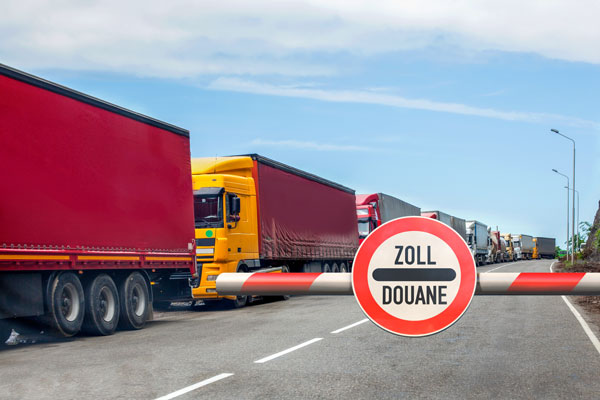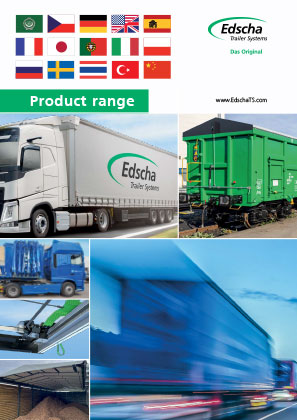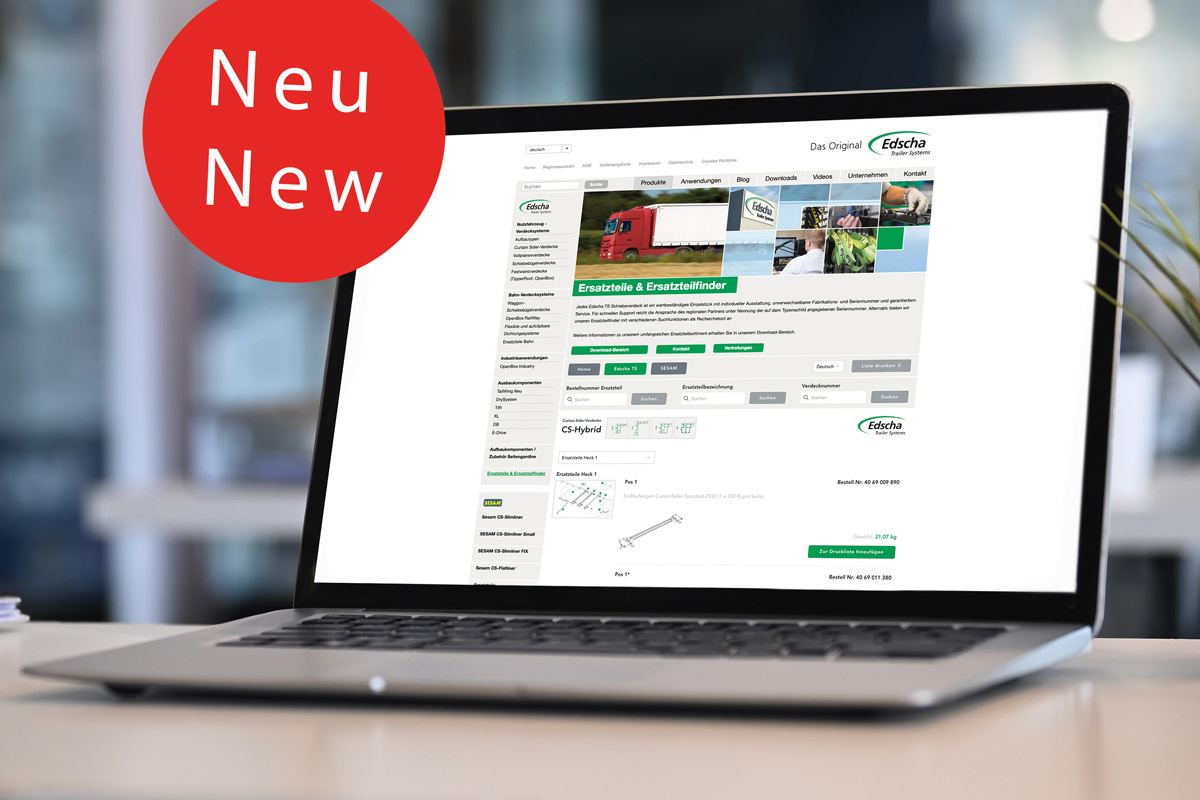Major facilitation of transit transport
The TIR concept simplifies the transport of goods in trucks across borders on four continents. With the help of a customs declaration, a standardised goods manifest and appropriate security safeguards, goods can be transported on roads through several countries without the necessity for extensive processing or checks at borders, easily speeding up the transit of consignments.
Vehicles transporting goods using the TIR system have the TIR sign on them and their cargo holds are sealed. Hence, it would be imme-diately apparent during customs inspections that they had been opened en route. The Carnet reduces all the bureaucratic customs procedures normally required at border posts as complex customs processing is only required in the country of origin and destination.
Trouble-free transit to journey's end - TIR transport with Edscha TS roofing solutions
Edscha TS truck roofing systems have become indispensable for TIR transport and are setting standards in this context. For example, there are the Curtain Sider tops CS-Hybrid and CS-ECO and also the sliding roof systems VP-Standard, VP-Eco and VP-Profi. Spe-cial structural features help to ensure that customs security is main-tained during international TIR goods transport. And then there is the ease of use of the sliding roof systems that facilitate rapid and sim-ple loading and unloading. Edscha TS roofing systems thus conform perfectly with the underlying TIR concept.
First TIR Agreement in 1949
The very first TIR Agreement was concluded in 1949 between sev-eral European countries. The current legal basis for the TIR proce-dure is the Customs Convention on the International Transport of Goods Under Cover of TIR Carnets concluded on 14 November 1975, to which 68 countries have signed up, including the member states of the European Union. However, the TIR rules are applied only in 58 of these countries. The TIR Carnet system, for example, is not used for goods transports outside the customs area of the EU.

Documentation not prepared by the customs authorities
By the way, the required customs documents - the TIR Carnets - are not issued by customs offices but by the IRU-International Road Transport Union/Union Internationale des Transports Routiers based in Geneva, which is also responsible for overseeing the system. The individual road carrier businesses are provided with the documenta-tion by the national associations to which they belong. In Germany, Carnets are issued by the various branches in each state of the Bundesverband Güterkraftverkehr, Logistik und Entsorgung (BGL) in Frankfurt and the Arbeitsgemeinschaft zur Förderung und Entwicklung des internationalen Straßenverkehrs (AIST) e.V. in Ber-lin. A TIR Carnet is valid for one journey only.
Random inspections - swift access
A TIR procedure is initiated at the customs office of departure. It is here that cargo holds are sealed, using special TIR cables, for ex-ample. At transit customs posts at borders, the vehicle, load and the corresponding TIR Carnet are to be made available for inspection. The procedure ends at the customs office of destination. In short, in-spections can take place at any point of the TIR transport route. The innovative Edscha TS roofing systems ensure that rapid and secure processing is possible during such inspections, irrespective of the load carried.






